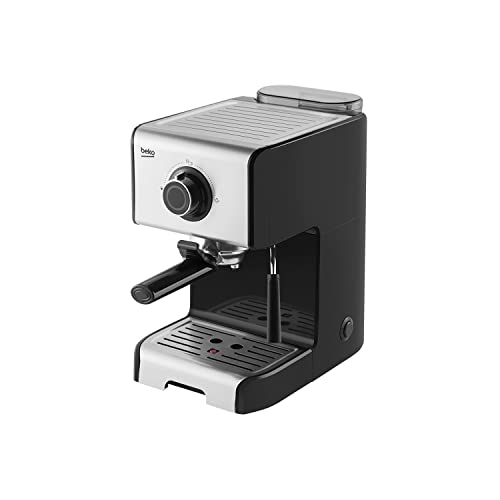Coffee and Espresso Machines
Espresso machines make use of pressure to push water through finely ground and tamped coffee beans. They produce a rich, delicious brew.
Good Housekeeping Institute experts recommend models that brew at a minimum of 9 bars for a perfect extraction. Beware of manufacturers that claim to use more pressure than necessary.
Types
The espresso machine, often known as a espresso and coffee maker, brews the more concentrated, premium coffee you love from your favourite cafe drinks using an average of 9 bars of pressure. They come with a range of features, including temperature control and brew-strength control, programmable brewing and various sizes of drinks. They may also come with steam wands, either manual or automated, to create texture-rich milk for latte art. There are three kinds of latte art of semi-automatic, super-automatic, and automatic. Each espresso machine has its own degree and type of automation.
The most popular espresso machine used in specialty coffee shops is semi-automatic models. Semi-automatic espresso machines offer baristas complete control over the brewing process, however they aren't as user-friendly as fully automated or automated machines. To get the most perfect espresso shot, you must grind the beans, then fill the portafilter, tamp it down, and alter the extraction time.
Automated machines have a built-in grinder which measures and mill the grounds for you. They automatically disperse enough water to extract espresso, and usually have an adjustable size for drinks. In our laboratory tests, they were the most sought-after type of espresso machine. They offer a great combination of consistency and manual control.
Functions
You'll need a reservoir to hold the water you need for making coffee, whether you choose a steam-driven or pump-driven machine. You'll also have an element to heat the cold water to produce the high pressure needed to extract coffee from grounds.
When the brew lever gets raised it triggers the water inlet cam to seal the valve that prevents pre-infusion so only intensely pressurized hot water flows through the portafilter before being ground into coffee. The water will take about 25 seconds to turn into espresso.
The hot-water tubing, referred to as the insulated tube, extends from the reservoir to the spout at top of your machine. The resistance heating element heats the water as it moves through the warming plate of metal and the aluminum tube.

After the spout has been turned on, place your cup underneath the spout, so that the espresso flows into your drink through the portafilter. The coffee maker will have a steam wand, that you can use to heat and froth milk for beverages that contain espresso like cappuccino or lattes.
Automatic machines eliminate the guesswork from making coffee. They are easy to use, programmable and are able to measure and grind beans and reduce tamping. They typically offer the highest overall performance in our Lab tests because they are simple to operate and do not require much user expertise.
Materials
The inside of an espresso machine is a world of copper tubes, boilers made of stainless steel, and intelligent firmware. Although they might appear to be complicated, their basic function is to force hot water into finely ground coffee.
When purchasing an espresso machine, you should consider the dimensions and space requirements as well as drink options, energy saving options, and brewing precision. Look for a steam button to turn on the steam wand. This is used to create Latte Arts and frothing milk. A pressure gauge on the front of the machine will let you know the boiler and pump operating pressure. Find the coffee maker with two needles, so that you can observe both the maximum and minimum pressure.
If you're looking to make more than just espresso, pick a machine that offers different brew sizes, including the ristretto. You can also find models that have the ability to remove the milk hopper for easy, hands-free frothing as well as the ability to change between different types of milk. If you have hard water, select one with a built-in water softener to prevent the buildup of minerals and keep your espresso tasting fresh.
Some manufacturers use PID (proportional integral, integral digital) thermostat to keep a specific temperature range for espresso brewing. This feature ensures a consistently excellent espresso cup every time. It also saves on energy costs, since the machine only operates when it's required.
Maintenance
As espresso machines and coffee makers become more widely available to home use, the regular maintenance of the equipment becomes more important. Having the most efficient equipment can make all the world of difference to your cup of coffee, but this is only true if your machine is in good working order.
A regular cleaning and maintenance routine should include everything from cleaning the steam wand and group head and descaling, as well as changing the water filter on a regular basis. If you make between two and five coffees each day, it is recommended that you clean the main parts of the machine once a week. However, some areas of the machine, like the water tank and the grinder should be cleaned every two or three weeks.
It is recommended to backflush the machine each week. This process involves locking the portafilter into place and running the brew cycle several times. This will help remove any coffee grounds or oils left behind. click through the up coming web page can also use a brush or cleaner specifically designed for espresso machines to clean the portafilter.
Maintaining your coffee and espresso machine in a proper manner can ensure that it lasts longer. It is essential to maintain your expensive professional espresso machine.
